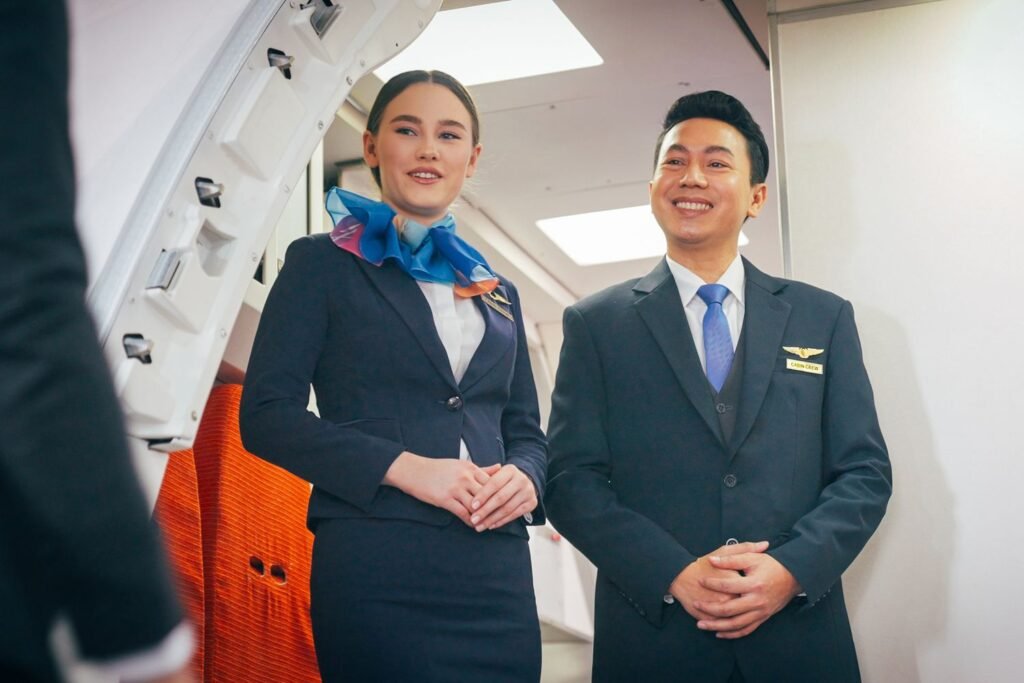- Flight attendants greet passengers at the door not just for courtesy, but to assess potential safety risks, medical needs, or security concerns.
- They also quickly identify people who may require additional assistance or those who could assist in emergencies,
- These initial interactions help with service logistics and ensure smooth, efficient boarding.
If you’ve ever stepped onto a plane, you’ve probably had a flight attendant greet you at the door. Yes, the gesture is partially about good customer service, but that’s not all. During boarding, flight attendants are actually conducting a quick evaluation of passengers to ensure safety and security.
Here’s what flight attendants are really doing.
boonsom/Getty Images
“When we greet passengers at the door, it’s not just about being friendly—we’re also quietly assessing,” says flight attendant Venezia Macias. “We look for signs of intoxication, suspicious behavior, or anyone who may need extra assistance, like elderly passengers, moms with small kids, or people with disabilities.”
This evaluation happens in seconds and serves as an early warning system; it extends to passenger behavior and condition. Unlike on the ground, where security personnel are readily available, flight crews have limited options once airborne. Identifying issues during boarding allows them to address concerns before takeoff.
In Case of Emergency
Jupiterimages/Getty Images
Staff members are quickly assessing for potential threats, but they’re also looking for people who could be crucial in an emergency.
“Flight attendants are scanning passengers, looking for those who are able-bodied and capable of assisting in case of an emergency or threat,” says Rachel Nichols, a former flight attendant who worked long-haul routes for an airline based in the Middle East. They’re also identifying travelers with mobility issues and spotting families with young children who would require extra attention during a potential evacuation.
Operational Logistics
eyesfoto/Getty Images
The door greetings also help flight attendants prepare their service strategy. Knowing the passenger mix helps them anticipate needs throughout the flight, from meal service to identifying nervous travelers who might need attention.
“We’re also making sure carry-on bags fit policy and that no one is coming on board already causing issues,” adds Macias. “And yes, we definitely notice how people choose to dress, too.”
Beyond safety and security concerns, flight attendants are also handling practical logistics. “We also check tickets and help passengers find which side of the aircraft their seat is located on,” says Nichols. This seemingly simple assistance helps prevent boarding delays and keeps the process moving smoothly for an on-time departure.
Next time you’re greeted at the aircraft door, remember that behind that warm smile is a trained professional who is helping make sure your flight is both pleasant and safe.


